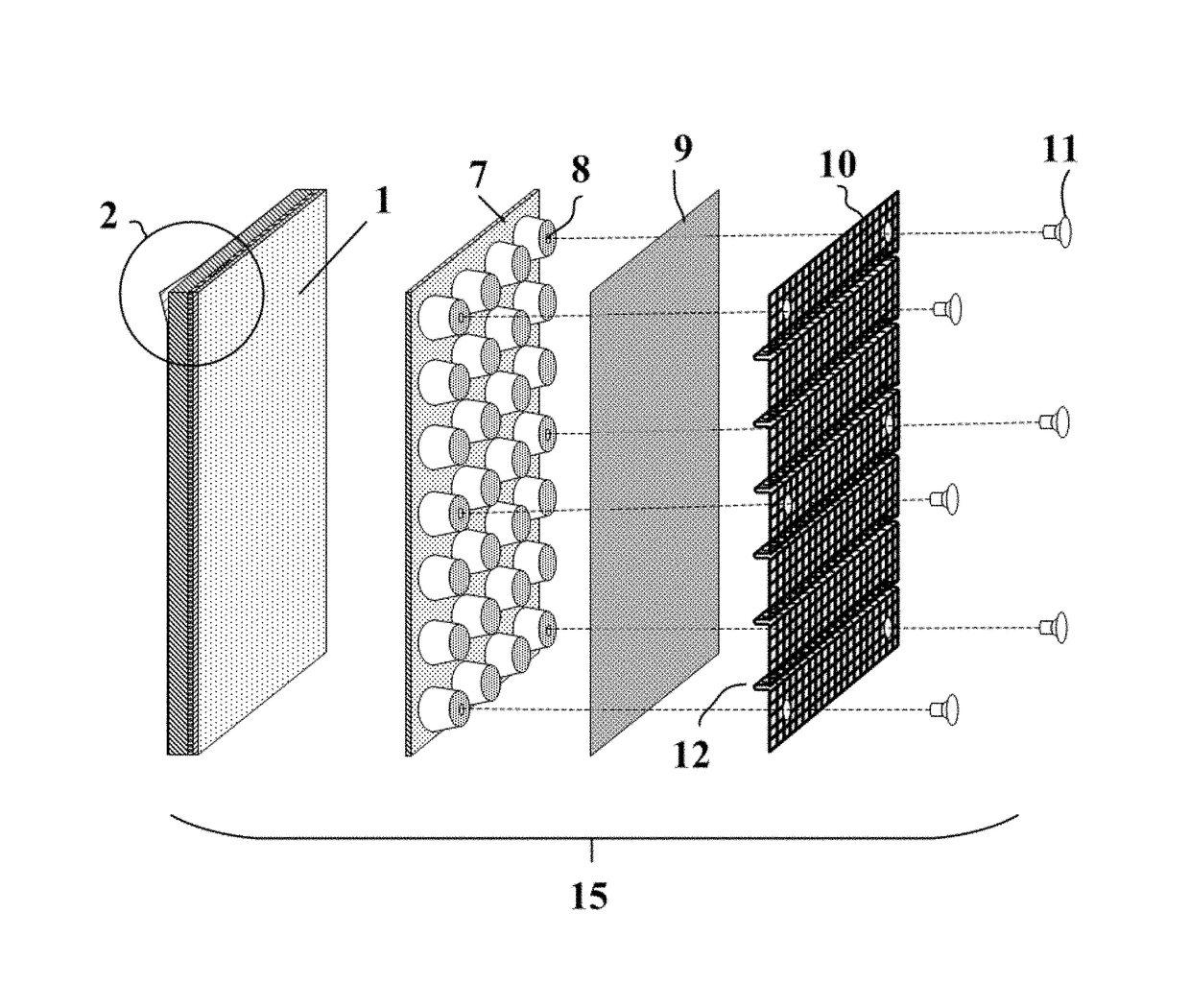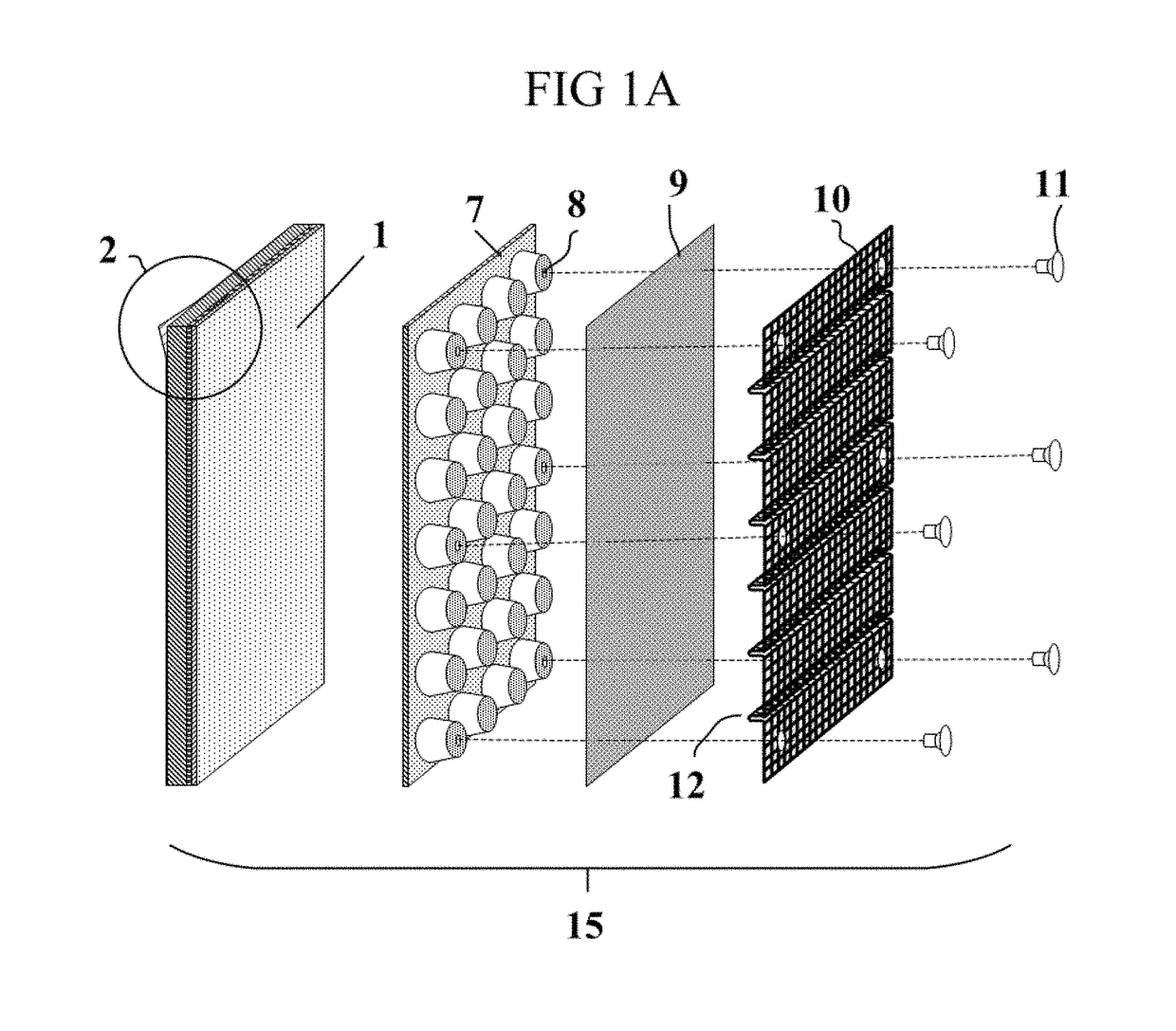Integrated waterproofing and drainage system with intrinsic leak detection
a waterproofing and drainage system technology, applied in the detection of fluid at the leakage point, foundation engineering, synthetic resin layered products, etc., can solve the problems of inability to maintain a stable clay material, easy to be damaged, and eventually wash away, so as to eliminate the variation in installation quality
- Summary
- Abstract
- Description
- Claims
- Application Information
AI Technical Summary
Benefits of technology
Problems solved by technology
Method used
Image
Examples
Embodiment Construction
[0047]FIG. 1A shows an exploded view of a corner section of a waterproofing panel assembly 15. FIG. 1B shows an enlarged view of a composite waterproofing membrane 1 as set forth in circle 2 from FIG. 1A. FIG. 1C shows an enlarged view of conductive components inside the waterproofing membrane 1. It must be noted that these illustrations, including FIG. 2 through FIG. 9 are not to scale and are simply intended to convey the mechanical structure of the invention.
[0048]The waterproofing panel assembly 15 illustrated at FIG. 1A has the composite waterproofing membrane 1, a drain board core 7, a filter fabric 9, an anti-abrasion layer 10; and a plurality of flat-topped high-impact polystyrene rivets 11.
[0049]The drain board core 7 can have a plurality of flat-topped dimples 8. The flat topped dimples are a high-impact polystyrene with the ability to withstand a compressive loading of at least 18,000 lbf / ft2 and provide a gravity-assisted water drainage flow of no less than 20 gallons / mi...
PUM
| Property | Measurement | Unit |
|---|---|---|
| time | aaaaa | aaaaa |
| thicknesses | aaaaa | aaaaa |
| thickness | aaaaa | aaaaa |
Abstract
Description
Claims
Application Information
 Login to View More
Login to View More - R&D
- Intellectual Property
- Life Sciences
- Materials
- Tech Scout
- Unparalleled Data Quality
- Higher Quality Content
- 60% Fewer Hallucinations
Browse by: Latest US Patents, China's latest patents, Technical Efficacy Thesaurus, Application Domain, Technology Topic, Popular Technical Reports.
© 2025 PatSnap. All rights reserved.Legal|Privacy policy|Modern Slavery Act Transparency Statement|Sitemap|About US| Contact US: help@patsnap.com



